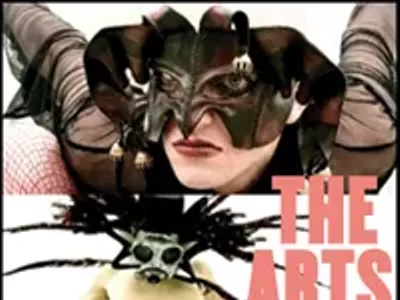Far from any town, in the middle of fields filled with wheat and berries and corn, is a single-story building. A circular ceramic ring, with metallic spokes connecting to its hub, is on the roof. This structure is wide, wider, even, than the building. It sits on a pedestal. When activated, the wheel spins and lights embedded within it flash brightly. Because the construction lies in remote country, the rotating, illuminated ring functions as a sign. It is the building’s strongest and most important location indicator.
The building is a laboratory and a home. It receives paying visitors. The men and women who live within the lab research. They measure, test, consult. Form, mix, coat. Sprinkle. They take long walks at each end of the day (pre-dawn, sunset). They are hardworking and patient. They are building residents.
The largest room, the hub of laboratory activity, is outfitted with counters, sinks, burners and ovens. On a typical afternoon, residents, wearing rubber-soled clogs and patterned housecoats, work here, utilizing research equipment: beakers, brushes, bowls, thermostats, whisks, pots. Visitors sit on the cement floor, necks craned up toward resident activity.
Housecoats are worn inside the laboratory during all waking hours. They are knee-length, organic cotton. They have buttons and a thin belt. Women tend to use the belt but not buttons. Men tend to use only the buttons.
The structure has a second space, beneath this working floor. A cellar. Not a junk cellar. There are no empty bottles, broken toilets, rusty sinks, insect carcasses. No piles of paint chips. The cellar is well-lit and immaculate. What it is not is consistent. The cellar walls do not stay in the same place. Because of the room’s unpredictable size and shape, residents are unable to utilize it as work or living space.
No one ever sees the cellar walls in motion, but they move. One moment the space is a tiny diamond, the next, a large rectangle. Ceiling height stays stable.
Residents respond to the irregular movement. They design and wear housecoats patterned with each cellar formation (diamond, rectangle, circle, square). A polka-dot garment acknowledges the basement’s small, circular formation. A large square room means residents dress in housecoats with big checks.
Indoor shoes are the rubber-soled clogs, a style worn by health-care providers, portrait painters and line cooks. Outside, on walks, residents wear thick soled, knee-high boots and hooded capes.
One feature does change up on the working floor — ground consistency. This happens at a regular time and for a specific reason. During the day the floor is solid cement. At sunset, just as people leave for their walk, ground transforms from its hard, stable surface into soft sand. Residents sleep on this sand. Each has a mat, pajamas, pillow and thick blanket. At night, they arrange their sleeping gear on the soft surface, and are able to rest comfortably.
What do residents research? Energy strains. Specifically: strategies that harness better energies, better forms of friction, and ward off the lesser, damaging ones.
Interaction is fine. Are there entanglements, disagreements, spats? Yes. These are researched. Some suspect that cellar wall movement is not random but the building’s response to social and project friction.
No resident or visitor calls friction itself BAD. Residents believe in friction, its power to generate ideas, stories, action plans. To clear up misunderstandings and uncover mistakes. To construct fine and specific product lines. What they also believe is that there are better and worse forms of friction, just as there are better and worse strains. Good energies electrify a project or personal interaction; bad ones squash anything. In no case of examining friction do residents call a meeting. Meetings do not solve friction issues. Neither does drinking. Drinking and meetings, separately, but especially together, are completely ineffective. Walks work. That’s why they take two daily, through vast fields, beneath a gray stretch of pre-dawn, post-sunset, sky. These generate functional friction. Still, activity alone is not enough. Merchandise is indispensable. This is why the laboratory is so well-outfitted with functional equipment. Consider these constructions: multiple, miniature versions of the building roof sign. Tiny wheels hang next to windows. When activated, wheels rotate furiously, separating the worse and better energies. The first are banished from the building. Pushed right outside a window over flat fields, where they can dissolve, leave or reconstruct. The second are harnessed. Nourished and maintained. Absorbed by residents, passed on to products and visitors.
Lynn Crawford is a freelance writer. Send comments to [email protected]





